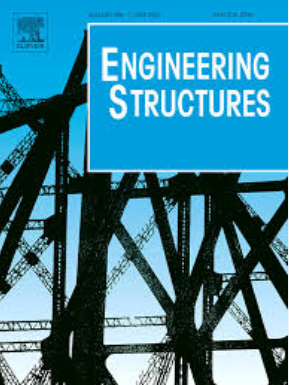Multi-dimensional crashworthiness performance prediction and constrained optimization of the HFC energy absorbing structures for railway vehicles driven by deep learning frameworks
IF 5.6
1区 工程技术
Q1 ENGINEERING, CIVIL
引用次数: 0
Abstract
The honeycomb-filled structures have better energy absorption performances but cross-effected by the complex interactions between filled honeycomb and metallic tube. Traditional surrogate model-based optimization methods can only ensure that the crashworthiness indicators meet the design expectations. However, unstable buckling and drastic load fluctuations cannot be avoided. In view of this, a multi-dimensional crashworthiness performance prediction and constrained optimization of a novel kind of honeycomb-filled composite structure are investigated. By utilizing the deep learning technique, the deformation images, crashworthiness indicators and load curves of the structure are predicted and introduced as constraints to the multi-objective optimization. Compared to the regular optimization results, the range of the Pareto front is significantly reduced after the introduction of extra constraints. Furthermore, the best solution obtained from the constrained optimization not only satisfy the conventional indicators constraint, but also performs well in terms of the deformation mode and load history. By applying the proposed method, the reliability of the optimization is dramatically improved. It is well proved that the proposed methodology can provide a feasible reference for similar problems of crashworthiness optimization of energy-absorbing structures.
基于深度学习框架的轨道车辆HFC吸能结构多维耐撞性能预测与约束优化
填充蜂窝结构具有较好的吸能性能,但受填充蜂窝与金属管复杂相互作用的交叉影响。传统的基于代理模型的优化方法只能保证耐撞性指标满足设计预期。然而,不稳定屈曲和剧烈的载荷波动是无法避免的。鉴于此,对一种新型蜂窝状填充复合材料结构的多维耐撞性能预测和约束优化进行了研究。利用深度学习技术,对结构的变形图像、耐撞指标和载荷曲线进行预测,并引入约束条件进行多目标优化。与常规优化结果相比,引入额外约束后,Pareto前沿的范围显著减小。此外,约束优化得到的最优解不仅满足常规指标约束,而且在变形模式和荷载历史方面表现良好。应用该方法,优化的可靠性得到了显著提高。实践证明,该方法可为类似的吸能结构耐撞优化问题提供可行的参考。
本文章由计算机程序翻译,如有差异,请以英文原文为准。
求助全文
约1分钟内获得全文
求助全文
来源期刊

Engineering Structures
工程技术-工程:土木
CiteScore
10.20
自引率
14.50%
发文量
1385
审稿时长
67 days
期刊介绍:
Engineering Structures provides a forum for a broad blend of scientific and technical papers to reflect the evolving needs of the structural engineering and structural mechanics communities. Particularly welcome are contributions dealing with applications of structural engineering and mechanics principles in all areas of technology. The journal aspires to a broad and integrated coverage of the effects of dynamic loadings and of the modelling techniques whereby the structural response to these loadings may be computed.
The scope of Engineering Structures encompasses, but is not restricted to, the following areas: infrastructure engineering; earthquake engineering; structure-fluid-soil interaction; wind engineering; fire engineering; blast engineering; structural reliability/stability; life assessment/integrity; structural health monitoring; multi-hazard engineering; structural dynamics; optimization; expert systems; experimental modelling; performance-based design; multiscale analysis; value engineering.
Topics of interest include: tall buildings; innovative structures; environmentally responsive structures; bridges; stadiums; commercial and public buildings; transmission towers; television and telecommunication masts; foldable structures; cooling towers; plates and shells; suspension structures; protective structures; smart structures; nuclear reactors; dams; pressure vessels; pipelines; tunnels.
Engineering Structures also publishes review articles, short communications and discussions, book reviews, and a diary on international events related to any aspect of structural engineering.
 求助内容:
求助内容: 应助结果提醒方式:
应助结果提醒方式:


